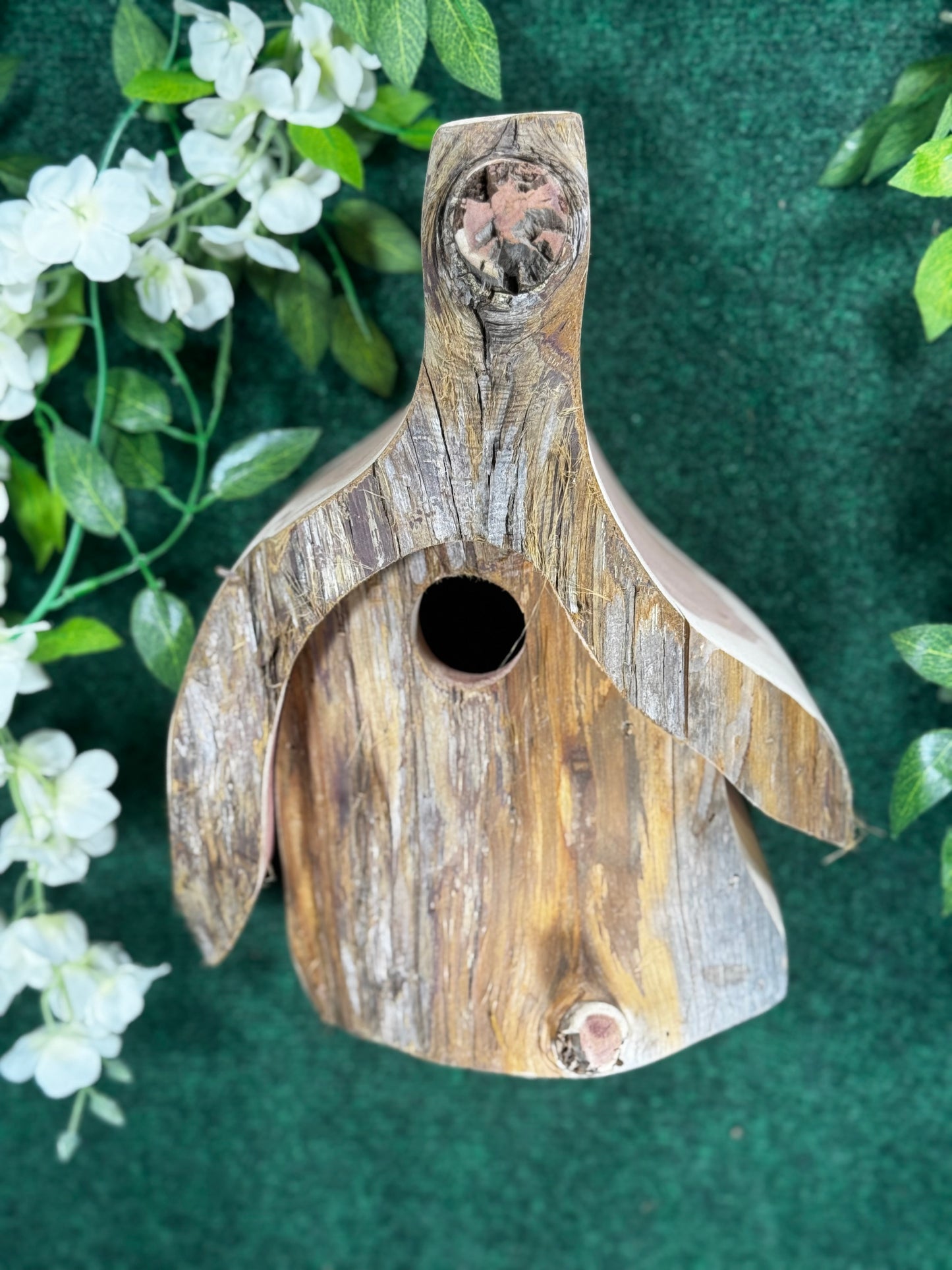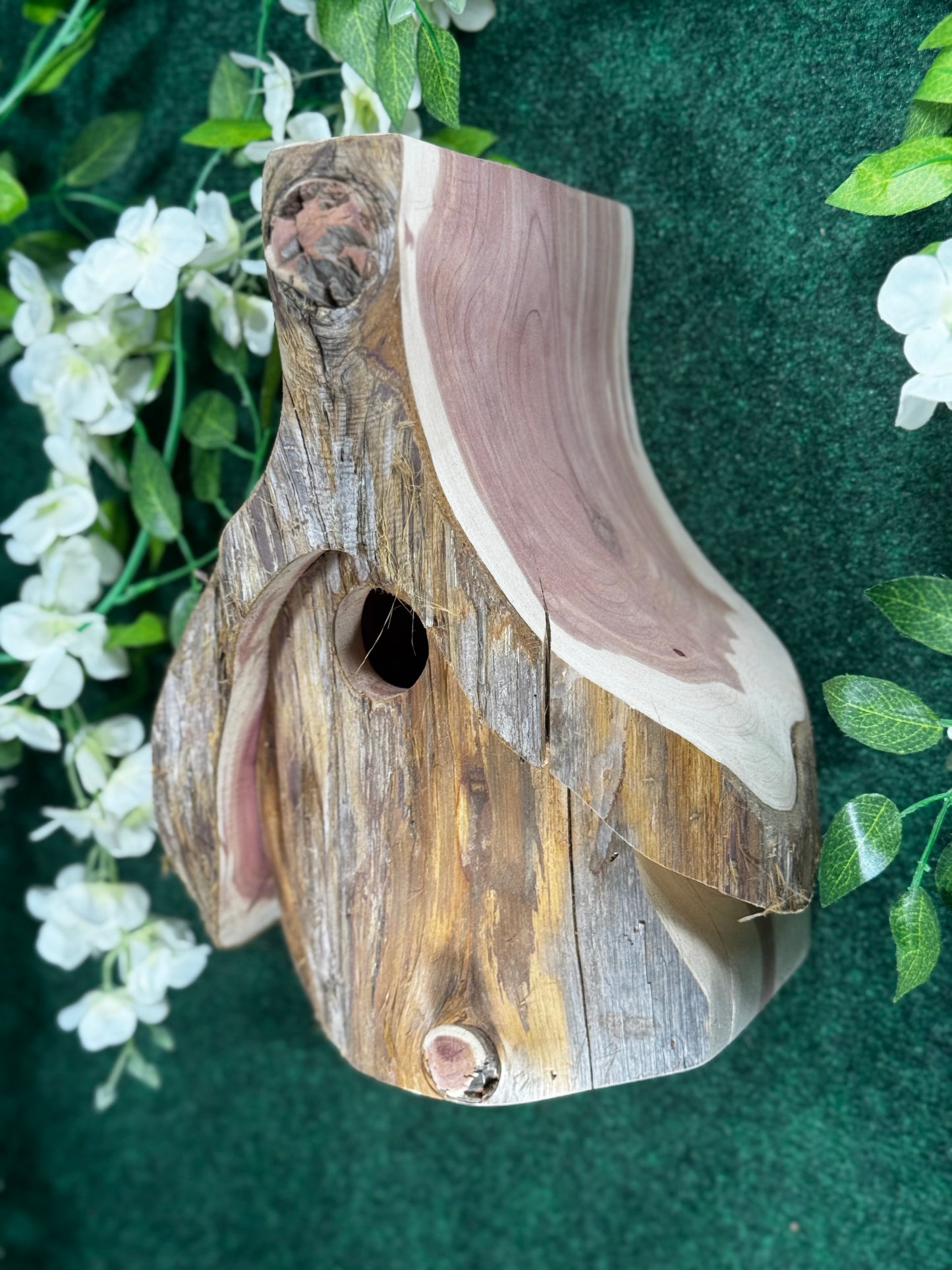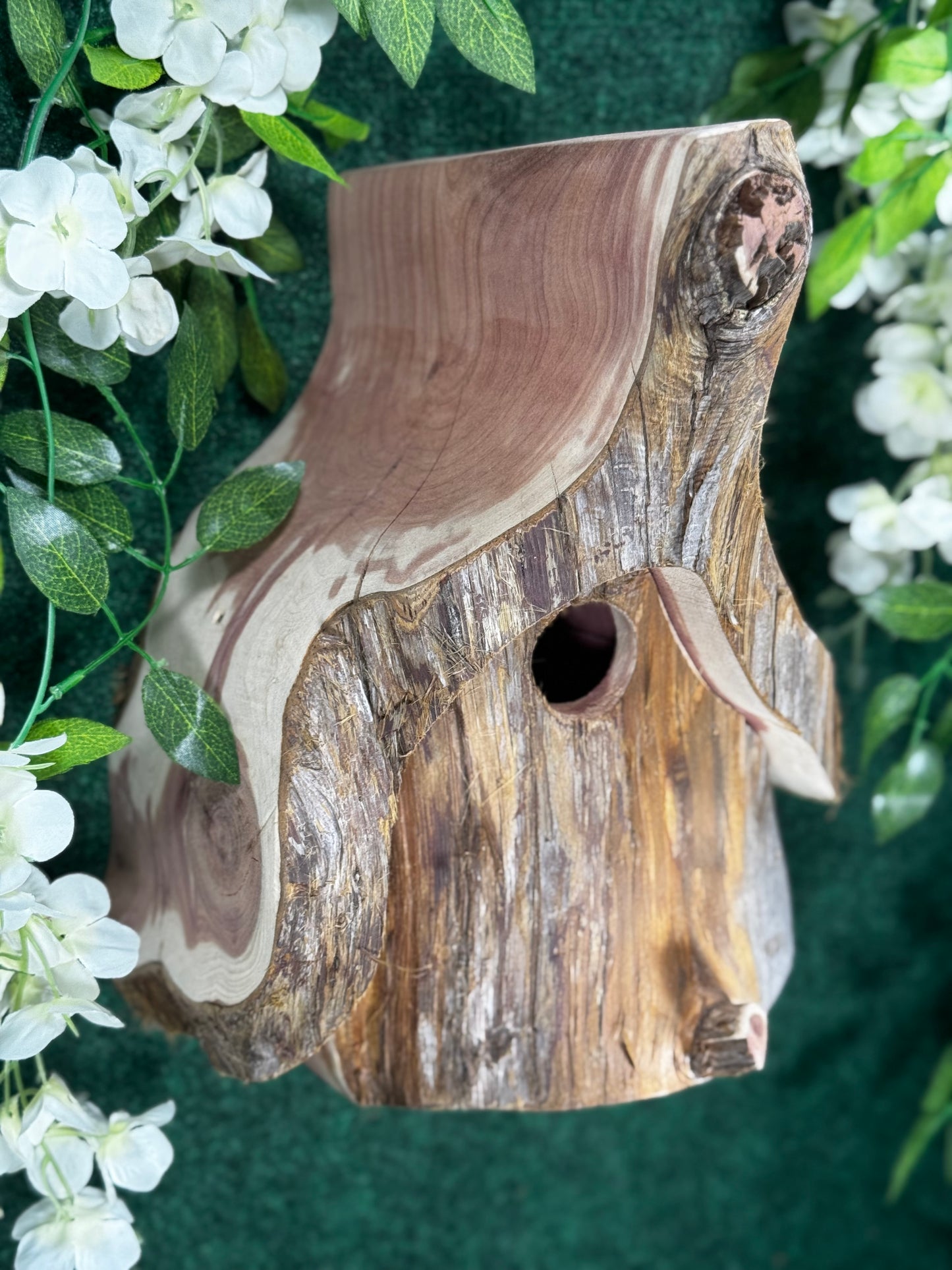Tweet Tweet Designs
Eastern cedar birdhomes
Eastern cedar birdhomes
Couldn't load pickup availability
Your cedar birdhouses are a great way to attract a variety of nesting birds while adding a beautiful, natural touch to your yard. Eastern cedar is an excellent material for birdhouses because it is naturally weather-resistant, durable, and provides good insulation to keep birds comfortable.
A Tale of Two Boxes: When Pairing Doesn't Promote Peace ...
Common birds attracted to cedar birdhouses
The type of bird you can expect to attract depends on the size of the house and the entrance hole. Based on typical birdhouse dimensions and the preferences of native cavity-nesting birds, you can likely attract species such as:
Bluebirds: Eastern bluebirds and other species are frequently drawn to cedar birdhouses with the correct entrance hole size.
Wrens: Small and active, wrens are often happy to nest in houses that are specifically designed for them.
Chickadees and Titmice: These small, social birds are common visitors to backyard birdhouses and appreciate the safety of a cedar nest box.
Swallows: Tree swallows and barn swallows may also use your birdhouses.
Advantages of using cedar for birdhouses
Besides attracting a variety of bird species, Eastern cedar offers several advantages for both you and your feathered residents:
Weather and insect resistance: Cedar's natural properties make it highly resistant to rot, decay, and insect damage, ensuring the birdhouse will last for many years.
Good insulation: The wood's porous structure provides excellent insulation, which helps keep the interior cool in the summer and warm in the winter.
Natural appeal: The rustic look and pleasant aroma of cedar are inviting to birds and naturally blend into any garden or backyard setting.
Safety for birds: Untreated cedar is a safe material for birds, as it does not contain the harmful chemicals found in pressure-treated wood.
Best practices for setting up your birdhouses
To make your cedar birdhouses most appealing to nesting birds, consider the following:
Placement: Mount the birdhouse on a pole or post in an open area, rather than hanging it from a tree. This makes it more difficult for predators like squirrels and raccoons to access.
Cleaning: Ensure the design allows for easy cleaning, as a clean nest box is important for the health of nesting birds.
Ventilation and drainage: Small holes for ventilation and drainage are crucial for keeping the nest dry and comfortable.
Predator guards: A metal or wooden guard around the entrance hole can protect birds from predators.
Share





